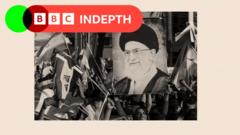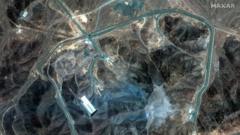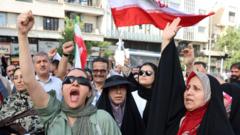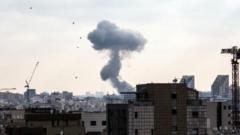Operation Midnight Hammer involved a strategic and multifaceted military operation by the US, deploying B-2 stealth bombers to carry out a surprise attack on Iran's nuclear sites. While the US claims significant success, the true impact and future implications remain uncertain.
Unveiling Operation Midnight Hammer: The US Strikes Iran's Nuclear Sites

Unveiling Operation Midnight Hammer: The US Strikes Iran's Nuclear Sites
A detailed account of the US military's operation against Iran shows the complexity and secrecy of the mission aimed at crippling its nuclear capabilities.
In the early hours of a recent night, the US launched a meticulously planned military operation against Iran's nuclear facilities, known as Operation Midnight Hammer. According to a briefing by four-star General Dan Caine, Chairman of the Joint Chiefs of Staff, the mission was characterized by its duration, complexity, and deceptive tactics. An overview of the operation was shared just hours after the strikes, indicating that the full impact remained ambiguous.
The mission commenced shortly after midnight, with US President Donald Trump and key officials observing the event from the Situation Room. Seven B-2 stealth bombers took off from Whiteman Air Force Base in Missouri, their primary aim being to target Iran's most secure nuclear locations, including the heavily fortified Fordo facility, hidden beneath a mountain.
Despite speculation about the bombers' deployment to Guam as a tactical diversion, it was revealed that they flew straight towards Iran under the radar, supported by mid-air refuels and other aircraft for protection. According to General Caine, the attack plan involved minimal communication and included additional decoys aimed at misleading potential observers.
As the bombers journeyed toward the Middle East, they faced no resistance from Iranian air defenses. Analysts noted that Israeli air dominance likely opened the skies for the American assault. In a brief timeframe, multiple bombers engaged pre-selected sites, beginning with the drop of Massive Ordnance Penetrator (MOP) bombs on Fordo, capable of breaching substantial earth and concrete barriers.
A total of 14 MOPs and an additional barrage of Tomahawk missiles aimed at Isfahan were subsequently deployed, marking the first instance of these advanced munitions being used in live combat. The mission employed a network of approximately 125 aircraft, emphasizing the operational scale.
While US officials claim the operation effectively dismantled significant portions of Iran's nuclear program, the aftermath is still being analyzed, with many military experts indicating uncertainty about the long-term repercussions. U.S. Secretary of Defense Pete Hegseth expressed confidence in the destructive capabilities displayed during the mission, but the actual extent of damage caused to Iran’s nuclear infrastructure has yet to be fully assessed. In a rapidly evolving geopolitical landscape, the ramifications of Operation Midnight Hammer will continue to unfold in the days ahead.






















